In a hangar on the College of Edinburgh, a triangular metal contraption sits beside a large tank of water. Contained in the tank, a technician in a yellow dinghy adjusts tools in order that the triangled construction could be hoisted into the water to see the way it offers with simulated waves and currents. Sooner or later quickly, a platform 50 instances as massive could float within the deep waters of the North Sea, buoying up an enormous wind turbine to reap the regular, sturdy breezes there. About an hour’s journey up the coast, full-scale 3,000-tonne behemoths already float in Aberdeen Bay, capturing sufficient wind power to impress practically 35,000 Scottish households.
The prototype on the
FloWave facility—one in all 10 new floating wind-power designs being examined right here—is progressing quick, says Tom Davey, who oversees testing. “Every part you see right here has been manufactured and put within the water within the final couple months.”
There’s good purpose for this hustle: The UK desires so as to add 34 gigawatts of offshore wind energy by 2030, en path to decarbonizing its grid by 2035. However the shallow waters east of London are already full of wind generators. Scotland’s deeper waters are subsequently the U.Okay.’s subsequent frontier. Auctions have put aside parcels for 27 floating wind farms, with a mixed capability exceeding 24 GW.
This scale mannequin of a floating wind-turbine platform is one in all 10 new designs being examined on the College of Edinburgh’s FloWave facility.Peter Fairley
This rush to deep water is a world phenomenon. To arrest the accelerating tempo of a altering local weather, the world wants much more clear power to impress heating, transportation, and business and to displace fossil-fuel era. Offshore wind energy is already taking part in a key position on this transition. However the steadiest, strongest wind blows over deep water—properly past the 60- to 70-meter restrict for the fastened foundations that anchor conventional wind generators to the ocean flooring. And in lots of locations, corresponding to North America’s deep Pacific coast, the strongest and steadiest wind blows within the night, which might completely complement photo voltaic power’s daytime peaks.
Therefore the push for wind platforms that float. The Biden administration has referred to as for 15 GW of floating offshore wind capability in america by 2035, and up to date analysis means that the U.S. Pacific coast may assist 100 GW extra by midcentury. Eire, South Korea, and Taiwan are among the many different international locations with daring floating wind ambitions.
The query is tips on how to scale up the expertise to gigawatt scale. This international debate is pitting innovation in opposition to threat.
On the innovation finish are folks like Davey and the FloWave group, who’ve already superior a number of floating wind gadgets to sea trials. One FloWave-tested platform, engineered by Copenhagen-based Stiesdal Offshore, was lately chosen for a 100-megawatt wind farm to be constructed off Scotland’s northern tip in 2025.
Kincardine Offshore Wind Farm challengePrecept Energy
Established tech firms, nevertheless, argue that their extra conservative designs are able to go at this time, and at greater scale. What the business actually must drive down prices, they are saying, is economies of scale. “In our view, that is purely a deployment query,” says Aaron Smith, chief industrial officer for the floating wind-tech developer Precept Energy, based mostly in Emeryville, Calif., whose platforms assist the 190-meter-high, 9.5-MW generators working in Aberdeen Bay.
If governments present constant, long-term subsidies, business standardization and mass manufacturing will ship the gigawatts, Smith says. “We now have the expertise. We’re simply angling for the best market situations to deploy that at scale.”
What are the benefits of floating wind energy?
To completely perceive what builders are up in opposition to, it helps to know the way onerous it’s to deploy any sort of wind energy at sea. The 15-MW generators being ordered at this time for tomorrow’s offshore wind farms weigh roughly 1,000 tonnes. The foundations of conventional offshore wind generators are additionally huge metal or concrete buildings that must be embedded within the ocean flooring. And putting in a turbine atop a tower that’s twice as tall because the Statue of Liberty requires devoted and expensive vessels, that are in
brief provide worldwide.
You are able to do with out such vessels by utilizing a floating platform. The tools could be absolutely assembled on shore after which towed to the positioning. However having a platform that floats compounds the problem of supporting the towering turbine.
To stabilize the primary floating wind farm, accomplished in 2017 about 50 kilometers northeast of the Aberdeen challenge, Norwegian power big Equinor used a metal column that extends 78 meters into the water. This dense mass, referred to as a spar platform, works just like the keel of a ship. Equinor used the identical design for an 88-MW, 11-turbine array—the world’s largest, although most likely not for lengthy—accomplished this yr in Norway. At that challenge, cables switch the electrical energy to grease and fuel platforms, quite than delivering the facility again to shore.
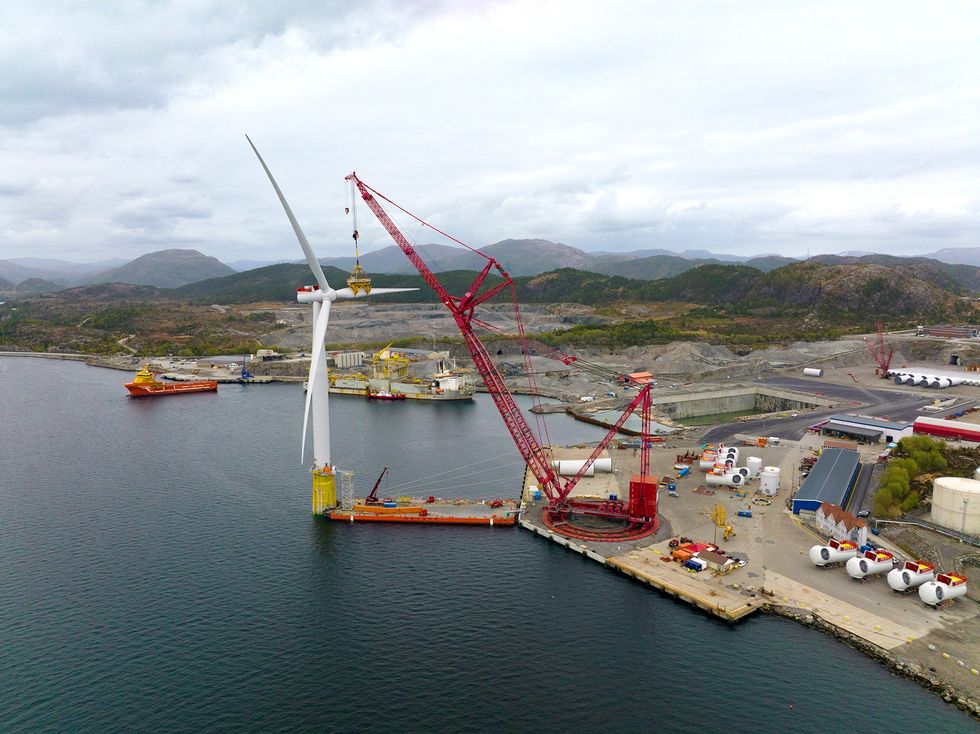
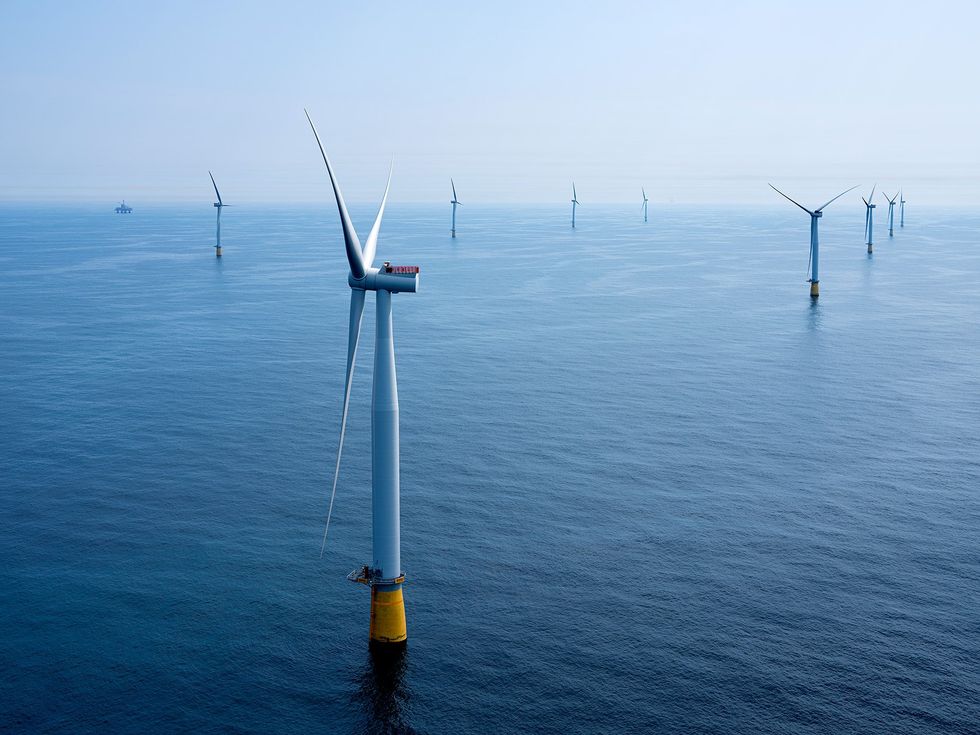
For its subsequent floating wind tasks, Equinor plans to make use of the extra conservative semisubmersible design, a expertise perfected for oil and fuel platforms. Semisubmersibles don’t go deep the best way spar platforms do; as a substitute, they obtain stability by extending their buoyancy horizontally.
Precept Energy’s WindFloat is a three-sided semisubmersible platform that’s roughly 70 meters on a facet. A concrete sq. variant from France’s BW Ideol is 35 to 55 meters on a facet.
Chains and anchors within the seabed forestall these platforms from spinning or drifting, which is essential for minimizing the actions that will flex and fatigue the generators’ energy cables. Some platforms, corresponding to WindFloat, shift ballast round to dampen wave motion or to maintain the rotor perpendicular to the wind in order to maximise power seize. WindFloat strikes the water ballast with pumps that run for about 20 minutes a day. “You’re naturally going to be heeling out of the wind, similar to with a sailboat. We’re shifting the water steadiness to compensate,” explains Smith.
Precept Energy then marries standard wind generators to the corporate’s floating platforms, making small however very important tweaks to the turbine’s management system to compensate for the variations between fastened and floating situations. For instance, if a floating platform begins to tip resulting from sturdy waves, a management system designed for a set basis could interpret the motion as a change in wind velocity after which pitch the blades in response. That correction may as a substitute amplify the rocking movement. WindFloat’s turbine controls are tuned to forestall such harmful suggestions.
Till 4 or 5 years in the past, floating wind builders needed to kind out such points on their very own, as a result of most turbine producers weren’t concerned with working with them. However now that builders are looking for dozens of generators for gigawatt-scale floating tasks, turbine producers are lastly devoting engineering assets to the trigger.
Thomas Choisnet, till lately chief expertise officer of BW Ideol, says the present era of 15-MW generators developed for fixed-foundation wind farms even have specs for floating. “They’re ensuring that all the pieces works on this transferring setting,” he says. Floating tasks thus profit from the a long time of design optimization and manufacturing scale that went into constructing at this time’s standard offshore wind installations.
Standard approaches take the lead
Past the technological benefits of utilizing a tried-and-true strategy, there’s a monetary upside, Smith says. Floating wind builders should persuade risk-averse bankers and insurers to again their tasks, and it helps to have the ability to level to your challenge’s use of established expertise. In years previous, offshore wind buyers who backed revolutionary however flawed designs suffered enormous losses.
Gigawatt-scale offshore installations additionally require huge private and non-private investments in ports and provide chains. Contemplate the
960-MW Buchan wind farm that Ideol is growing for the Scottish North Sea. As a result of the challenge features a seasoned expertise supplier, it’s transferring quicker than most. The consortium has already secured connections to the grid, and Ideol has secured 34 hectares east of Inverness to fabricate its platforms.
The house owners of the mothballed
Ardersier Port, which as soon as serviced oil and fuel platforms, plan to work with Ideol to rework the port right into a regional hub that may ship floating wind platforms to tasks throughout the North Sea. To supply the steel-reinforced concrete for Ideol’s platforms, Ardersier will get a brand new concrete plant, an oil-rig decommissioning facility, and the U.Okay.’s first new steelworks in half a century, to recycle the rigs’ metal. The metal mill, says Ideol, will probably be one of many world’s first to exchange metallurgical coal with renewable electrical energy and hydrogen.
Constructing superstable platforms like Ideol’s and Precept Energy’s to accommodate standard generators is dear. In accordance with the consulting agency
BloombergNEF, current floating tasks price as much as US $10 million per megawatt. The ensuing energy is roughly 3 times as costly as era from fixed-bottom offshore wind. And people excessive prices are hindering builders’ potential to clinch long-term power-supply contracts with utilities. In June, power consultancy 4C Offshore reduce its international floating wind-power projection for 2030 by practically 1 / 4 in contrast with its projection from a yr earlier.
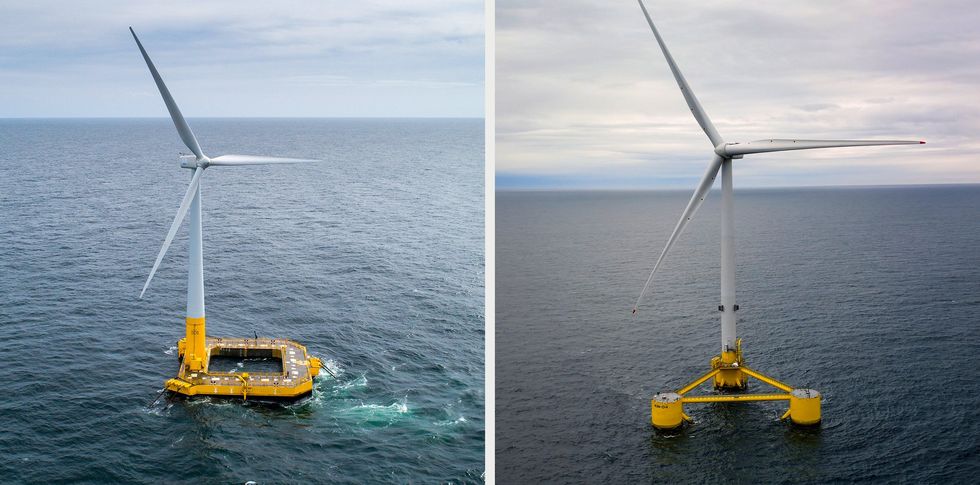
On the Floating Offshore Wind Generators convention held final Could, a number of builders referred to as on main turbine producers, corresponding to Vestas and Basic Electrical, to adapt their {hardware} to assist cut back the price of floating wind. For instance, if generators may cope with extra movement, then floating platforms may very well be smaller, and thus cheaper, says
Cédric Le Bousse, director for marine renewable power for the French utility Électricité de France, which lately put in a three-turbine floating wind demonstration close to Marseille. As it’s, he says, floating platforms should be “over-dimensioned” to attain the strict limits on actions set by the turbine producers.
The promise of recent designs
In the meantime, floating wind’s mold-breakers are providing an ever-expanding range of expertise choices. No less than 80 designs for platforms or built-in platform-turbines now vie for the floating wind market.
For starters, there are dozens of platform designs. There are semisubmersibles that seat the turbine towards the middle of the construction, corresponding to Stiesdal’s tetrahedral
TetraSub. That geometry distributes the rotor’s weight and torquing forces and reduces the platform’s weight and thus its price. There’s a 40,000-tonne spar platform that replaces the metal column with a less expensive, 285-meter-long column of concrete.
Extra radical floating wind-power designs flout decades-old engineering assumptions. Many of those assumptions make much less sense far offshore, says
Klaus Ulrich Drechsel, an offshore-energy engineering supervisor for the German utility EnBW. “It’s essential to not solely attempt to overcome the disadvantages but in addition to make the most of the potential advantages of floating.”
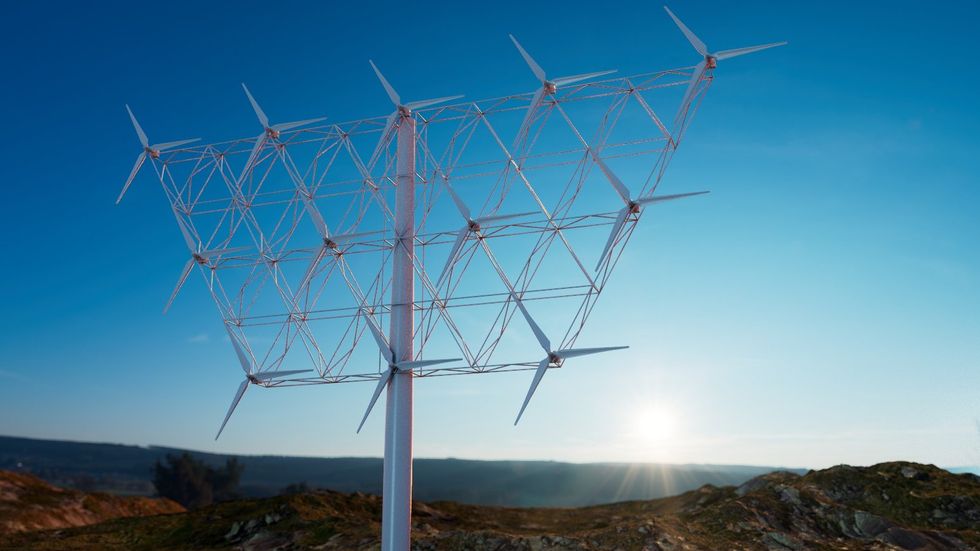
For instance, some floating turbine configurations permit the rotor to face downwind. Turbine makers had lengthy prevented doing that as a result of it’s noisy, because the blades should move via the wind’s “shadow” behind the tower. However far offshore, the ensuing
thump-thump-thump is unlikely to offend anybody. And the wind itself can then orient the rotor, eliminating the necessity for motors and gears that maintain standard generators dealing with into the wind.
One other thought is so as to add extra rotors to a single tower. Multirotor generators can improve manufacturing by forcing extra air to movement via the rotors. The rotors’ counterrotation, in the meantime, neutralizes the torquing drive that tilts single-rotor floaters to 1 facet and strains turbine towers.
Massive company gamers are taking over the multirotor and downwind designs. Plenitude, a subsidiary of the Italian oil and fuel producer Eni, has
purchased into EnerOcean, a Spanish agency that validated its 12-MW twin-rotor design at FloWave. Chinese language turbine big Mingyang Good Power Group is manufacturing a floater with twin 8.3-MW rotors, set for set up this yr off Macau. EnBW is cofunding that demonstration, in trade for unique rights to deploy the design in Europe.
The trio of business Ph.D.s behind Scottish startup
Myriad Wind Power Methods determine two rotors can’t seize the complete advantages of a number of rotors. Their 90-meter-tall array has 12 rotors. “We’re seeing it as sort of a ‘wind farm on a stick,’” says Paul Pirrie, Myriad’s CTO.
Myriad makes use of a pivoting tree construction to assist the rotors. The body is modular for simpler transport. Built-in tracks and lifts facilitate meeting, with the turbine mills and rotors delivered to the bottom and raised into place. Any defective tools, which in any other case can be a logistical nightmare to restore or exchange out at sea, can return to the tower’s backside through the tracks and lifts, with the alternative half hoisted aloft through the identical route.
Myriad hopes to have a demonstrator put in on land in 2025. However the firm is already dealing with competitors from Oslo startup Wind Catching Methods, whose 126-rotor floating design is in prototype improvement with assist from Basic Motors.
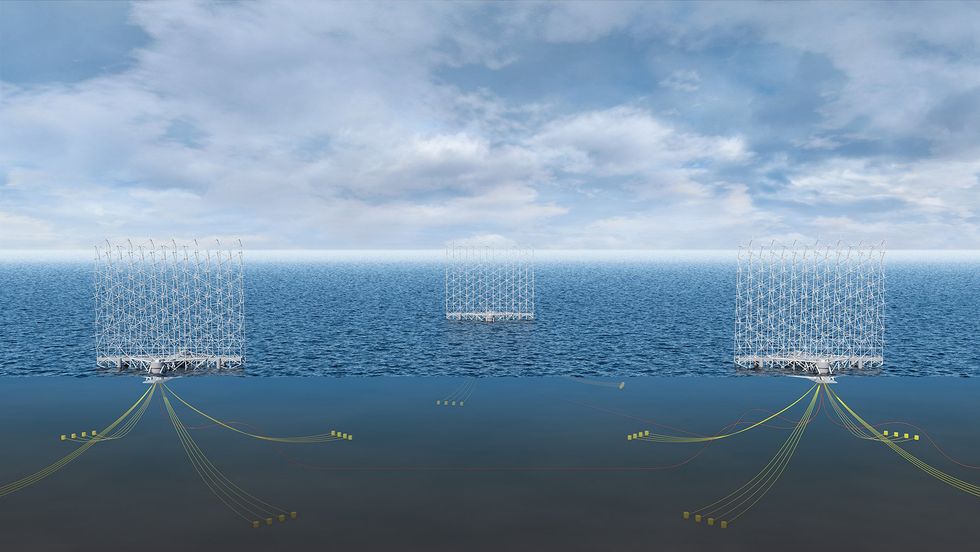
Sustained authorities assist is essential
Finally, floating wind energy may grow to be utterly untethered. A number of groups worldwide at the moment are engaged on wind
ships, an idea first steered by the U.S. wind-energy pioneer William Heronemus in 1972. He envisioned a tetherless, self-propelled floating platform that will seize wind energy, use it to generate hydrogen, and retailer that gasoline for supply to shore. (Heronemus additionally launched the College of Massachusetts’ wind-engineering program, coaching the engineers who launched the U.S. wind-power business.)
Autonomous wind ships reduce out the facility cables and mooring chains utilized by floating offshore wind platforms. Ideas just like the UMass group’s Wind Trawler, a contemporary model of Heronemus’s wind ship, “usually are not depth restricted in any respect and so have a doubtlessly huge seize space,” says
James Manwell, an engineering professor at UMass Amherst.
Eliminating energy cables and mooring chains may additionally assuage a number of the issues over offshore wind’s potential impact on fisheries and wildlife. For instance, fishing is usually banned inside wind farms to keep away from entanglement of fishing gear. Such fishing-free zones have a tendency to boost fisheries, offering a refuge wherein fish develop bigger and reproduce. However, fishing pursuits usually oppose any limits to their freedom to fish, arguing that restricted areas drive them to journey additional. Citing such issues, Oregon’s governor lately referred to as for a
pause in offshore wind preparations, despite the fact that generators floating off the Pacific coast are nonetheless years away.
Within the close to time period, the floating wind business faces a extra intrinsic, logistical downside. Particularly, builders want ports to start out gearing as much as construct and launch their huge wind machines.
Scottish Renewables, a regional business group, says that the U.Okay. “urgently” wants to rework not less than three ports into industrial hubs to ensure that the nation to satisfy its 2030 power and emissions targets. And but the business hasn’t settled on which turbine and platform designs are greatest, and so ports have no idea tips on how to gear up.
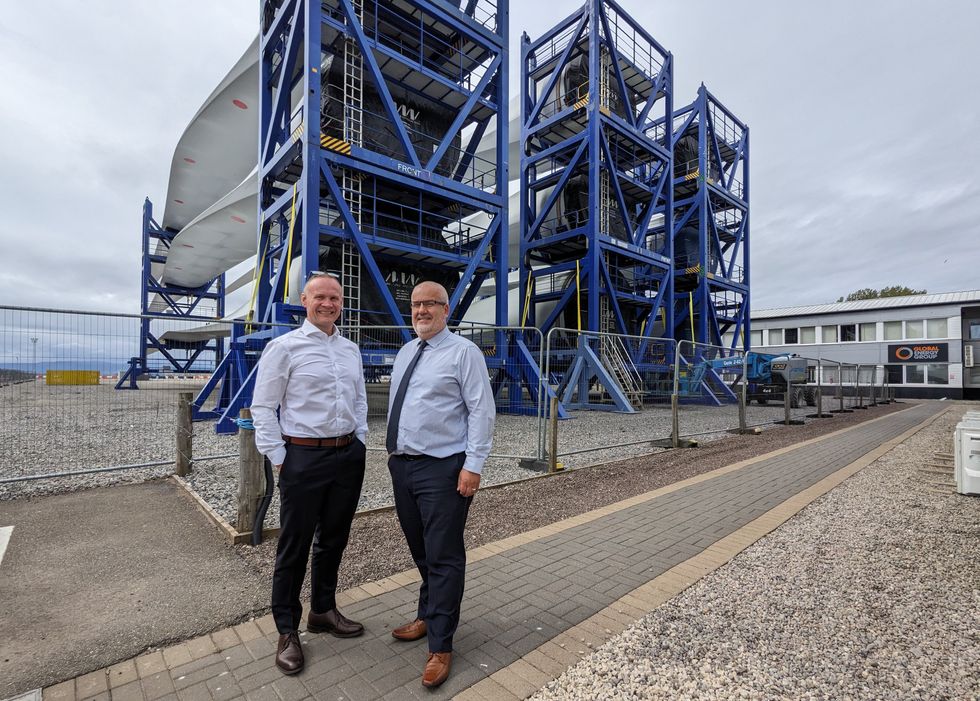
“The variables make for an absolute minefield,” says
Iain Sinclair, govt director for renewables and power transition for the Edinburgh-based World Power Group. Sinclair’s firm owns three Scottish ports, together with the Port of Nigg northeast of Inverness, which has been recognized as one of the vital promising locations for floating wind energy.
Again within the day, Nigg constructed about 40 p.c of the North Sea’s oil and fuel platforms. On the port’s peak within the Nineteen Seventies and Eighties, 4,000 folks labored there, and petroleum fumes crammed the air. Right this moment, you’re extra more likely to scent distillery vapors wafting over the harbor—what locals name the “angels’ share” of the Highland’s widespread single malts. Nigg’s oil terminal is shuttered, and drilling platforms go to occasionally. However there’s loads of bustle now, due to investments by World Power Group which have turned Nigg right into a staging level for offshore wind building. When
IEEE Spectrum visited, cranes have been lifting huge towers, nacelles, and blades onto an set up vessel, destined for a fixed-foundation wind farm.
Sinclair is betting that constructing, deploying, and sustaining floating wind farms will in the end dwarf the final century’s oil and fuel increase. And it may occur quick: An unbiased
2021 report predicted that floating offshore wind would contribute £1.5-billion to Scotland’s economic system by 2027 with solely modest port upgrades, and as much as triple that quantity with extra strategic investments.
To find out the place to focus Nigg’s upgrades, Sinclair and his group have assessed 57 floating wind designs and zeroed in on a half-dozen of essentially the most promising. They’ve mapped these designs onto Nigg’s current and potential capabilities, corresponding to manufacturing tubular metal, assembling elements within the port’s 36,000 sq. meters of coated fabrication area, and pairing generators to platforms alongside the harbor’s 1.2-km-long quayside.
What the floating wind business actually wants now, says Sinclair, is sustained authorities assist. At Nigg, meaning greater than the U.Okay. authorities’s £160 million for floating offshore wind manufacturing introduced in March, which Scottish Renewables says “falls woefully brief.” It additionally means a plan to develop Scotland’s ports, which may price £4 billion. The identical issues are being voiced by floating wind proponents in america, France, Germany, and different international locations, as they push for their very own infrastructure upgrades.
Henry Jeffrey, one in all Tom Davey’s colleagues on the College of Edinburgh, is a transplant from offshore oil and fuel engineering who now codirects the U.Okay.’s Supergen Offshore Renewable Power R&D effort. He agrees that governments have to step up. Jeffrey says politicians ask him on a regular basis when floating offshore wind expertise will probably be aggressive.
“I say, ‘Properly, it’s immediately proportional to your political will. It’s as much as you to make it occur,’” Jeffrey says. The expertise is “as shut and credible as authorities desires it to be.”
From Your Web site Articles
Associated Articles Across the Internet




